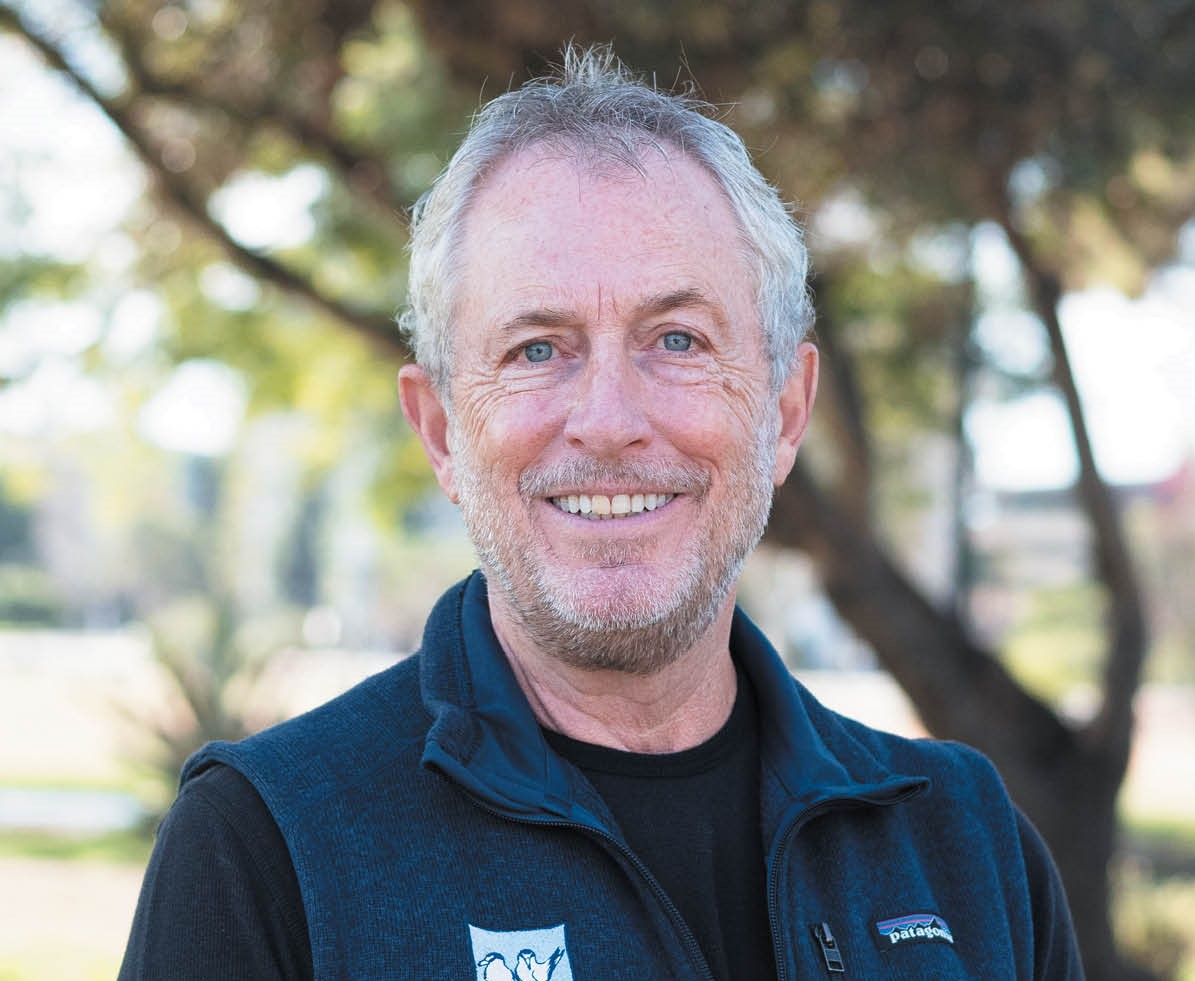For the Friends of Ballona Wetlands it’s all about education, restoration and advocacy. According to Executive Director Scott Culbertson, the coastal wetlands are an often-overlooked ecosystem that are incredibly important for the future of our planet. Not only do coastal wetlands capture and store three to five times more carbon than tropical rainforests, they also filter and recharge groundwater, and they will be incredibly important to help combat sea level rise. As L.A.’s last coastal wetland, Ballona is a refuge for wildlife and the public to experience and create a connection to nature in a dense metropolitan area.
Q. What are some of the programs or initiatives that you’re most proud of for 2022? What are some of the goals for 2023? A. 2022 has been a year of growth for the Friends of Ballona Wetlands. We’ve been extremely fortunate to have received incredible support throughout the pandemic. In 2022, our education team worked tirelessly to engage with students through field trips, in-class lessons and summer camp, resulting in more than 5,000 interactions with students, which are similar numbers from before the pandemic. Our education team also piloted a new program for teens called E.C.O. (Environmental Careers and Occupations) Quest. This program aims to introduce career opportunities in the environmental field to underrepresented and BIPOC youth.
By the end of the program, we saw that 44 percent of participants showed an increase in environmental career knowledge, and 55 percent of participants had an increased interest in pursuing an environmental career. We look forward to implementing new lessons and methods to enhance our program in 2023; however, we are very pleased with the data we collected from our first class of E.C.O. Quest Explorers!
This year alone, our restoration team and more than 1,300 interns and volunteers removed more than 31 tons of non-native plants and planted 630 new plants in our hand-restoration projects on the Ballona Wetlands. The Friends host Community Restoration Events three times a month, and our restoration team of staff, interns and volunteers are out on the wetlands almost every day of the week, working tirelessly to improve the habitat as much as we can manage with our small team. These efforts ultimately support the large-scale restoration that California’s Department of Fish and Wildlife (CDFW) is currently working towards.
In 2023, we will continue to expand the federally endangered El Segundo Blue Butterfly’s habitat by planting 200 more Seacliff Buckwheat on the ecological reserve, with hope that with more plants, more butterflies will show up next summer! Make sure to look for our Celebration of the Blues event next year for a chance to observe this little blue butterfly up close!
Not only has the generosity of our constituents allowed us to continue to provide educational opportunities and push our restoration efforts forward, but our donors have also paved the way for the Friends to expand our staff by two! Adding two new staff members will expand our capacity to reach more diverse communities and specifically connect with more young people in underrepresented regions.
Q. How is your nonprofit having an impact in Westchester/Playa and beyond? A. Since our founding in 1978, the Friends have advocated for the preservation and restoration of the Ballona Wetlands. We continue to educate the community and restore the Ballona Wetlands.
Our environmental education program, “Explore Ballona!,” provides programming to K through 12 students from throughout greater Los Angeles. Local participating schools include Playa Vista Elementary, WISH Charter, Paseo Del Rey Natural Science Magnet, St. Bernard High School, St. Anastasia School, Westside Neighborhood School, and more. In 2022, the Friends had more than 5,000 student interactions, and we hope that these students will become lifelong stewards of nature.
The Friends impact does not only affect Westchester and Playa del Rey, but also all Angelenos. According to the State of the State’s Wetlands Report, scientists have found that 90 percent of wetland habitat in California has been lost, and in Southern California, more than 95 percent of wetland habitats have been lost due to development.
Restoring Ballona will provide several ecosystem services like flood control, water filtration and carbon sequestration, and also increase habitat for wildlife and public access to nature.
Q. What is the best way for people to support or get involved with your organization? A. There are many ways to get involved with the Friends; ultimately, a donation will support all of our programs and projects, amplify our message and empower the next generation. However, you can also get involved by taking a wetlands tour, attending a special event, or becoming a volunteer. We also have a monthly newsletter that arrives in your inbox at the beginning of each month to keep you up to date with the Friends. Visit ballonafriends.org for our schedule, details and event registration for our clean ups and fundraisers.
Q. What’s the number one thing the community should know about the Friends of Ballona Wetlands? A. In 1978, Ruth Lansford and a small group of neighbors and academics founded the Friends of Ballona Wetlands to fight Howard Hughes’ heirs from developing the Ballona Wetlands. And they won! Since then, we have fought tooth and nail to preserve the now 566 acres of wetland habitat, and the Friends will not stop until we “Bring Ballona Back!”
We also want to make sure everyone knows it’s pronounced “Bye-O-na” Wetlands.
Learn more at ballonafriends.org.

